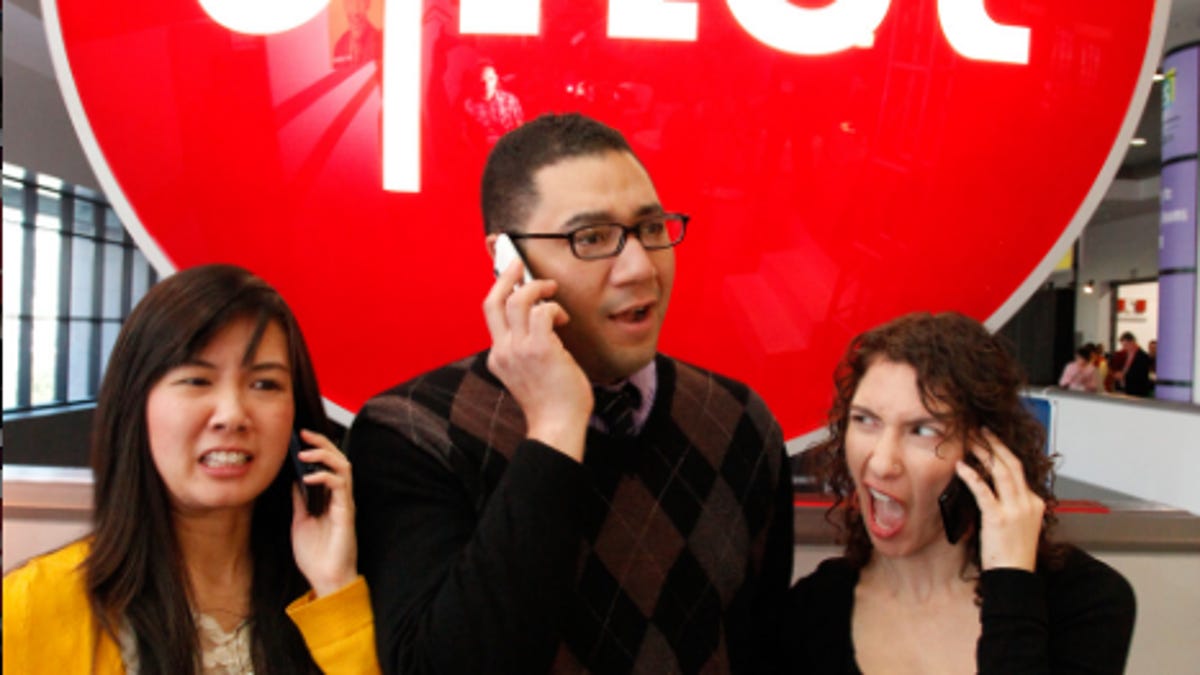CES data storm sweeps up wireless carriers
CNET offers a snapshot of how the carriers fared in handling the immense data load that comes from having thousands of gadget-geeks flock to Las Vegas. Hint: 4G LTE was a real lifeline.

LAS VEGAS--The irony never fails to smack us in the face. Every year, the flood of conference-goers at the Consumer Electronics Show and other technology events strain the cellular networks to their limits--and beyond--leaving thousands of people hopelessly disconnected to the outside world.
Every year, the carriers vow to prepare for the massive confab, bringing in portable cellular towers, adding antennas and signal repeaters, and adding capacity especially for the show. But every year, the same kind of network hiccups occur, leaving us to wonder why the carriers, who pay so much to represent themselves here, never seem to learn.
CNET's Brian Bennett was standing at a T-Mobile press event, T-Mobile phone in hand, unsuccessfully trying to tweet about meeting the carrier's TV mouthpiece, actress/model Carly Foulkes. He couldn't get enough signal in the event room within the Venetian hotel.
Anecdotes like that are pervasive around CES and similar shows, which suggests that carriers never do enough to supply enough network juice to go around. Ask them, however--like we did--and they'll tell you that they do anticipate the influx of data-hungry users, but that congestion is so bad we rarely see it.
"At tech-heavy conferences like CES, we do notice an uptick in traffic," a Sprint representative told CNET. "Last year we saw a 20 percent increase in traffic at CES, so that's what we prepared for this year."
Of all the carriers, AT&T seems to have been the most proactive, at least from the details they shared when we asked each carrier what steps they take to supply reliable coverage for shows like CES. AT&T replied that they boosted 4G LTE in the around the Las Vegas Convention Center. The extra power is courtesy of a device called a COW, or cell tower on wheels, that's parked near the conference complex. AT&T said it is also offering Wi-Fi for CES attendees, to lighten its data load.
As with last year, 4G LTE offered a respite for frantic editors and reporters as 3G coverage has largely been dismal.
For its part, Sprint told us that it increased its voice and EV-DO capacity at sites surrounding the conference location. T-Mobile shared that it added new 4G sites on the Las Vegas strip, and reminded us of general network improvements to Las Vegas, including upgrading hotels with indoor 4G antenna systems, and increasing capacity along the strip.
Verizon said it works very hard to keep its network reliable. A Verizon executive told CNET that they did bring in extra equipment around the city, but much of the bulked up infrastructure handling the CES traffic is part of the permanent fixtures in the city.
It isn't enough
The carriers may talk a good game, but they clearly aren't doing enough.
The keynote addresses at the Venetian were hotbeds of congested wireless traffic. Announcers on stage would consistently demand that the audience turn off their wireless connection for the presentation--a request that was universally ignored. AT&T, despite its focus on bulking up LTE coverage, apparently forgot about the its HSPA+ network, which could barely get a signal during the high-profile conferences. Many of the CNET news team members abandoned their mobile hot spots, which had been rendered into useless hockey pucks during most of the major events.
T-Mobile's service was similarly ineffective in many places--including at the T-Mobile conference. Sprint's 4G WiMax service, which is powered by Clearwire's network, had more mixed results.
In what could be construed as fodder for conspiracy theory, Verizon's 3G network was completely out at AT&T's press conference--although Verizon's LTE still worked well. Stepping outside of the Palms hotel where AT&T held its event, and Verizon's 3G immediately returned, while another reporter's AT&T iPhone began to lose bars.
Verizon's 4G LTE service was by far the most consistent network at the show, and Verizon mobile hotspots and laptop cards were highly coveted items.
To be fair, these are just a few random anecdotes from CNET staffers. It's more of a snapshot of how the telcos did, and not really indicative of the overall performance. Planning for an event like this is also difficult, given the different variables out there. The carriers need to prepare for varying number of people moving around to different places, all using their phones and hot spots at different times and all consuming varying degrees of bandwidth.
Helping the wireless providers are outfits that help track the figures, such as Root Metrics, which keeps yearly tabs. Reporting on CES 2011, Root Metrics (PDF) tracked upload and download speeds, and reliability on the carriers' 3G and 4G networks. The graphs report strengths and weaknesses by the hour, and exposed AT&T as the most poor performing network at last year's show, a reality that likely inspired this year's cell-on-wheels.
CES and conferences like it may only span a few days each year, but it is during these crucial hours that deals get made and a company's fortunes could be deterined. One would think that when the companies in question are the wireless suppliers themselves, impressing CES attendees and future customers with strong, fast, and unwavering coverage would be a top priority.



